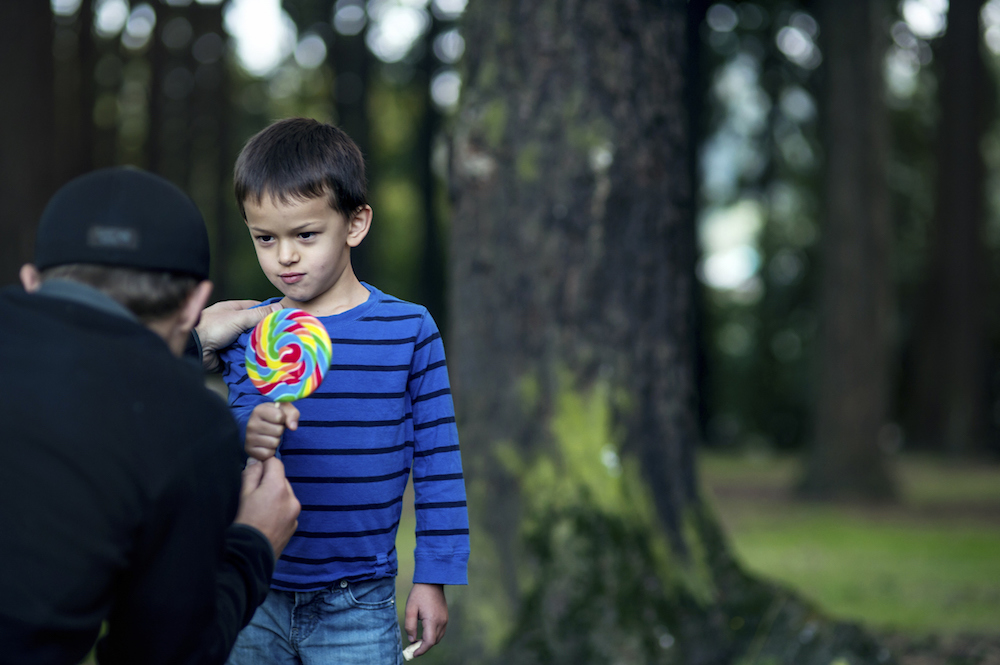
In 2013, the news of the discovery of three young women who went missing in Cleveland gave hope to families with members who went missing too, especially the missing children.
The notion of a stranger grabbing a child or even a grown person off the streets is a fear that nobody wants to talk about, as if avoiding the topic will ensure it won’t happen to them or their loved ones.
If you’re a parent on the verge of putting a GPS tracker on your child to give you peace of mind about their safety, here are the facts and myths about missing children you should be aware of.
Scroll down for videos

JDP
Myths About Missing Children
Most missing children were abducted by strangers
Abductions scare people because they usually appear random and usually involve sexual abuse or homicide. However, children taken by strangers or acquaintances represent only one-hundredth of one percent of all the missing children.
Most of the time, missing children are those who have run away, gotten lost or injured or even those who were taken by family members, usually due to a custody dispute. Sometimes there are those who were not where they were expected to be because of miscommunication. False reports of missing children to cover up murders or murderous deeds meanwhile are even less likely than the typical kidnapping that involves strangers and acquaintances.
Abduction and homicide are horrible, but the costs of missing-children cases are not to be underestimated. Cases numbering in the hundreds and thousands occupy a lot of police time and leave lasting scars to victims and their families.
More and more children are going missing
The Cleveland case prompted more and more myths about missing children in America. Headlines like “Missing Children in America: Unsolved Cases” and “Search for missing children never ends in Las Vegas” stir up curiosity, eventually becoming a starting point of a lot of myths.
While it looks like kidnapping and abducting children is becoming an epidemic, it’s just one of the many myths about missing children. In reality, the number of cases has actually been declining. The reports were also backed by FBI statistics: fewer people have been reported missing, down to 31 percent between 1997 and 2011. The number of homicide, sexual assaults, and other crimes against children too have been on a steady decline.
So why are fewer children going missing?
Cell phones are part of it. Phone signals can almost always summon help to get them out of threatening situations. It also enables parents to find out where the kids are when they don’t come home right after school. It gives teens a longer leash than in the past, thus helping counteract an important motive, so less of them run away from home.
Of course, there are also other factors involved. For instance, the police and the government have been more aggressive in finding and prosecuting sex offenders. There have been prevention programs, missing kid alert systems like the AMBER Alert, and child safety apps that help discourage crime and resolve disappearances faster than ever.
The Internet
Stranger danger has been extended online. Parents warn their children against talking to people online whom they haven’t met in real life.
But the Internet may actually have contributed to the decline of the number of missing children. It has changed the way people take risks. These days, instead of unchaperoned parties with kegs, young people socialize and experiment online, and the distance can make it safer still.
Technology also makes tracking easier. GPS child locator, for instance, can pinpoint a specific location, so any planned trysts between minors and grown men, if caught early on, can be foiled by the police.
Talking to children about stranger danger can prevent kidnappings

What’s Up Doc
Right off the bat, one of the earliest lessons parents and teachers teach children is that they should never talk to strangers. However, considering that everyone is a stranger, in the beginning, it’s doubtful whether or not this really helps.
Based on statistics, children are usually abducted by people they know more than strangers, and it would be better if adults can teach them how adults should act, like teaching them which behaviors are considered “bad” and which body parts are considered inappropriate to touch.
So whether these are facts or myths about missing children, kids should learn refusal skills, disengagement skills, and even ways to call for help. Stranger danger is not always the right way of keeping kids safe.
The main goal is to unite children with their families
Professionals who deal with these cases are usually police officers who were trained to locate and bring back missing people. However, the majority of missing children are actually ones who are suffering from family conflicts. They run away or are pushed away due to family problems that could be dangerous to their health or welfare; for instance, many of them could be victims of abuse or neglect.
There are a lot of reasons why some children end up running away from home, and bringing them back to where they came from may not be the best decision for officers to make, even more so if conflict and abuse eat away their mental health.
Locating missing children should be so much more than bringing them home to their families—it should also include therapy, mediation, and even child protection to better protect them from external factors that could cause them harm. Better yet, it should also include parenting education and other support programs to build stronger families in the future.
Watch the videos below